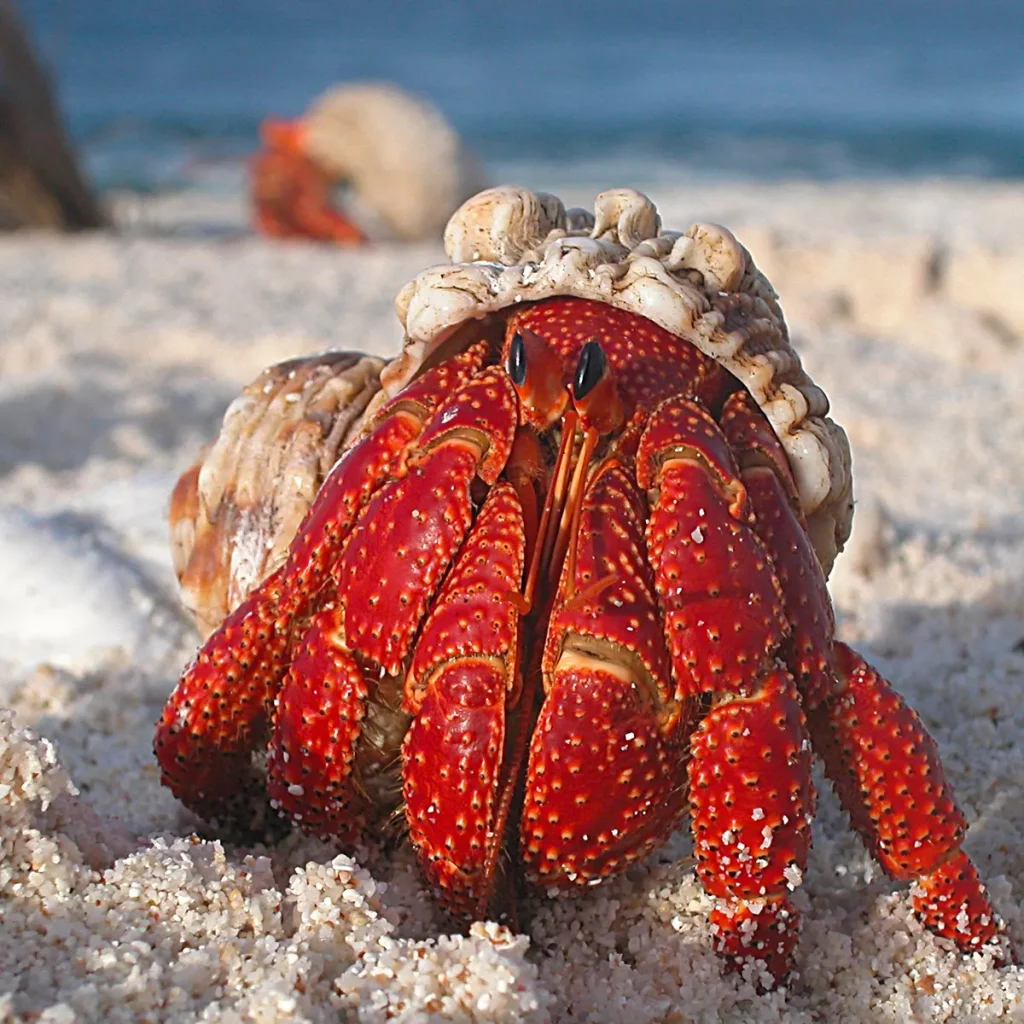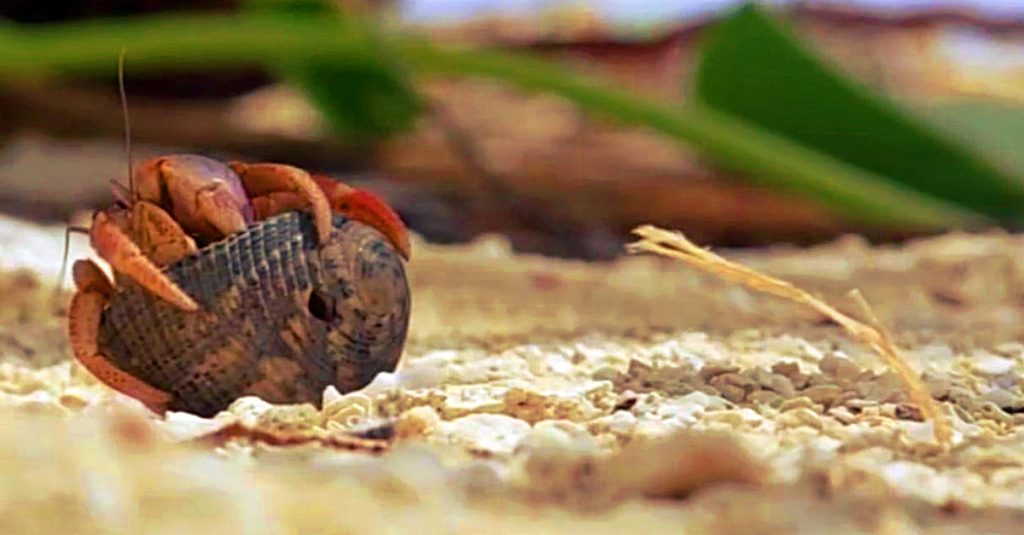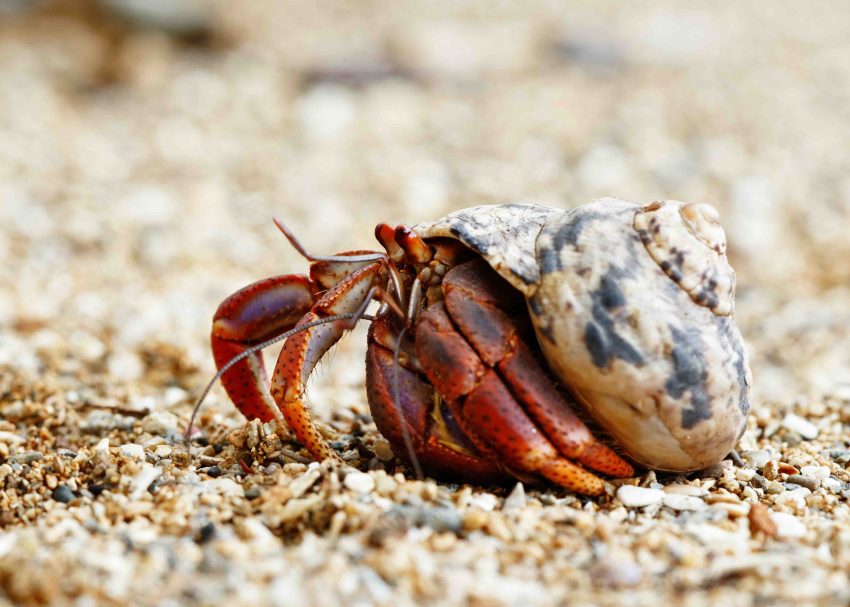Crabs, those intriguing crustaceans of the sea, hold a remarkable ability that has puzzled and fascinated scientists and nature enthusiasts alike. It’s the phenomenon of growing new shells. But how exactly do they do it, and what drives this astonishing process?
Yes, Crabs grow new shells through a process called molting. Before molting, a crab absorbs some of the stuff in its old shell, making it soft. Then, it secretes enzymes to separate the old shell from the skin underneath. After that, the skin produces a new, soft shell beneath the old one.
This process is vital because crabs can outgrow their old shells or may get damaged. The new shell gives them protection and support for survival. Molting is like a wardrobe change for crabs, helping them adapt to their growing size and the environment they live in.
Prepare to be amazed by the wonders of nature and the resilience of these marine creatures.
Anatomy of a Crab’s Shell

Exoskeleton: The crab’s exoskeleton is a hard, rigid outer covering made primarily of chitin, a tough, fibrous substance. It provides structural support and protection for the body.
Carapace: The carapace is the large, domed, and hard upper part of the exoskeleton that covers the crab’s cephalothorax, a fused head and thorax region. It acts as a shield to protect the vital organs, such as the heart and gills.
Abdominal Plates: The abdomen of consists of multiple plates that are joined together. These plates are also part of the exoskeleton and provide protection for the soft and vulnerable parts of the body, including the reproductive organs.
Articulations: Also, they have jointed exoskeletons, allowing for movement. These joints are reinforced by thickened regions of the exoskeleton called articulations, which facilitate flexibility and mobility.
Sutures: The regions where different plates of the exoskeleton meet are called sutures. Sutures can be flexible or immobile, depending on the specific needs of the crab’s anatomy.
Cuticle: The outermost layer of the exoskeleton is the cuticle, which is a thin, waxy layer that helps to prevent desiccation (drying out) and provides some resistance to pathogens.
Ecdysis Lines: Ecdysis lines are faint lines or marks on them, representing the places where it will split during molting. These lines indicate where the old one will separate to allow the crab to shed it.
Eye Stalks: On the front of the carapace, crabs typically have two eye stalks, each with a compound eye. These eye stalks are flexible and can be moved to scan the surroundings.
Antennae and Mouthparts: Various sensory antennae and mouthparts are attached to the cephalothorax, which is protected by the carapace. These structures are essential for feeding and detecting environmental cues.
Walking Legs and Appendages: They have multiple pairs of walking legs, which are segmented and jointed. They allow it to move and manipulate objects. Some legs may have specialized structures, such as chelae (pincers) for grasping and defense.
Gills: While not part of the exoskeleton, gills are important respiratory structures that are enclosed within the branchial chamber beneath the carapace. Gills extract oxygen from water and facilitate respiration.
Molting Process
Molting Trigger:
- Molting is typically initiated by internal factors such as hormonal changes. These hormones, like ecdysteroids, signal the crab that it’s time to prepare for molting.
Pre-Molting Stage:
- Before molting, it undergoes a series of preparatory changes, which can include changes in behavior and physiological adjustments.
- Also, it absorbs water, which softens the existing exoskeleton and helps facilitate its eventual shedding.
- The absorption of water also contributes to the expansion of the body, allowing it to grow into a larger exoskeleton.
Sudden Ecdysis:
- At the onset of ecdysis, it secretes enzymes that weaken the connection between the old exoskeleton and the epidermis beneath.
- Further, swells its body by taking in additional water, creating pressure on the old one.
Shedding the Old Exoskeleton:
- When it gets too big for its old shell, breaks the shell along weak lines and crawls out, usually starting from the front. This takes a few hours, and while it’s happening, the crab is in danger because it doesn’t have its tough shell to protect it.
New Exoskeleton Formation:
- Its new shell, which emerges from its old one, is pliable and supple like paper. The new layer absorbs minerals to strengthen itself and takes a few days to weeks to harden. It can grow inside the larger new shell since it is larger.
Post-Molt Recovery:
- A crab’s fragile shell makes it vulnerable to injury from predators and other environmental factors when it initially emerges from the water. Therefore, it may seek refuge elsewhere or hide in the sand to keep safe. Over time, the new shell develops tougher, more resilient, and more adept at moving around, all of which contribute to keeping it safe from harm.
Adjustment to New Exoskeleton:
- Lastly, When crabs grow new shells, they can change how they look, like their colors and shapes. Each type of crab has its own special way of changing. They might also start acting and eating differently as they get used to their bigger shells. These changes help them fit in better and stay safe in their environment.
Factors Influencing Shell Growth
Here are the key factors that influence shell growth in crabs:
Age and Size of the Crab:
- Young crabs tend to molt more frequently and grow at a faster rate than adult crabs. This is because they have a higher growth potential and need to increase in size to reach maturity.
- Adult may continue to molt but at a slower rate, primarily for repairing and replacing damaged or worn-out exoskeletons.
Environmental Factors:
- Temperature plays a crucial role in shell growth. Warmer temperatures generally promote faster metabolism and growth, while colder temperatures can slow down the molting process. In some species, temperature influences the timing and frequency of molting.
- The availability and quality of food sources impact growth rate. Abundant and nutritious food resources can lead to more rapid shell growth, while food scarcity may slow it down.
Frequency of Molting:
- The frequency of molting varies by species and can be influenced by factors like temperature, food availability, and the crab’s age.
- Some crabs, such as blue crabs, may molt more frequently, especially in their juvenile stages, to accommodate rapid growth. Others, like king crabs, molt less often.
Hormonal Regulation:
- Internal hormonal signals, particularly ecdysteroids, play a significant role. Hormonal fluctuations trigger the release of enzymes that facilitate the separation of the old exoskeleton.
Genetics:
- Genetic factors can influence a crab’s growth potential and the size it can attain. Different crab species have varying growth patterns and maximum sizes determined by their genetic makeup.
Maturity and Reproduction:
- Maturity and reproductive status can affect the timing. In some cases, they may delay until after they have mated and laid eggs (in females). This is because the vulnerable post-molt period can be risky during reproductive activities.
Predation and Environmental Stress:
- Crabs may molt in response to environmental stressors or threats from predators. This can cause to the shedding of the old exoskeleton to escape danger.
Seasonal and Photoperiodic Cues:
- This is more commonly observed in land crabs, like the Christmas Island red crab, where migrations and mating are closely tied to seasonal changes.
Salinity and Water Quality:
- Rapid changes in salinity levels or exposure to pollutants can stress crabs and impact their ability to molt successfully.
Adaptations for Shell Growth

Crabs have evolved several adaptations to support the growth of their new shells during molting. They time their molting to occur when environmental conditions are favorable and have specific weak points in their exoskeletons, called ecdysis lines, which facilitate shedding.
Furthermore, Before molting, they absorb water to soften their old shell and create space for the new, larger one. The new shell hardens through calcium deposition, and crabs may bury themselves or seek shelter to avoid predators during their vulnerable post-molt period.
Then, Behavioral changes, such as grooming and testing mobility, help them adjust to the new shell. Their sensory structures, like antennae, assist in timing molting. Overall, these adaptations ensure their survival and efficient growth while minimizing risks.
Final Words
To wrap up, the process of crabs growing new shells through molting is a complex and essential aspect of their life cycle. They have developed various adaptations, such as ecdysis timing, flexible articulations, and the ability to absorb water and minerals, to ensure the successful shedding of their old exoskeletons and the growth of larger, protective shells.
In addition, these adaptations help them survive and enable them to adjust to shifting environmental factors as well as changes in age and size. Gaining knowledge of the elements and adaptations that contribute to shell growth might help us better understand the amazing capacities of these crustaceans to survive in a changing and demanding environment.

